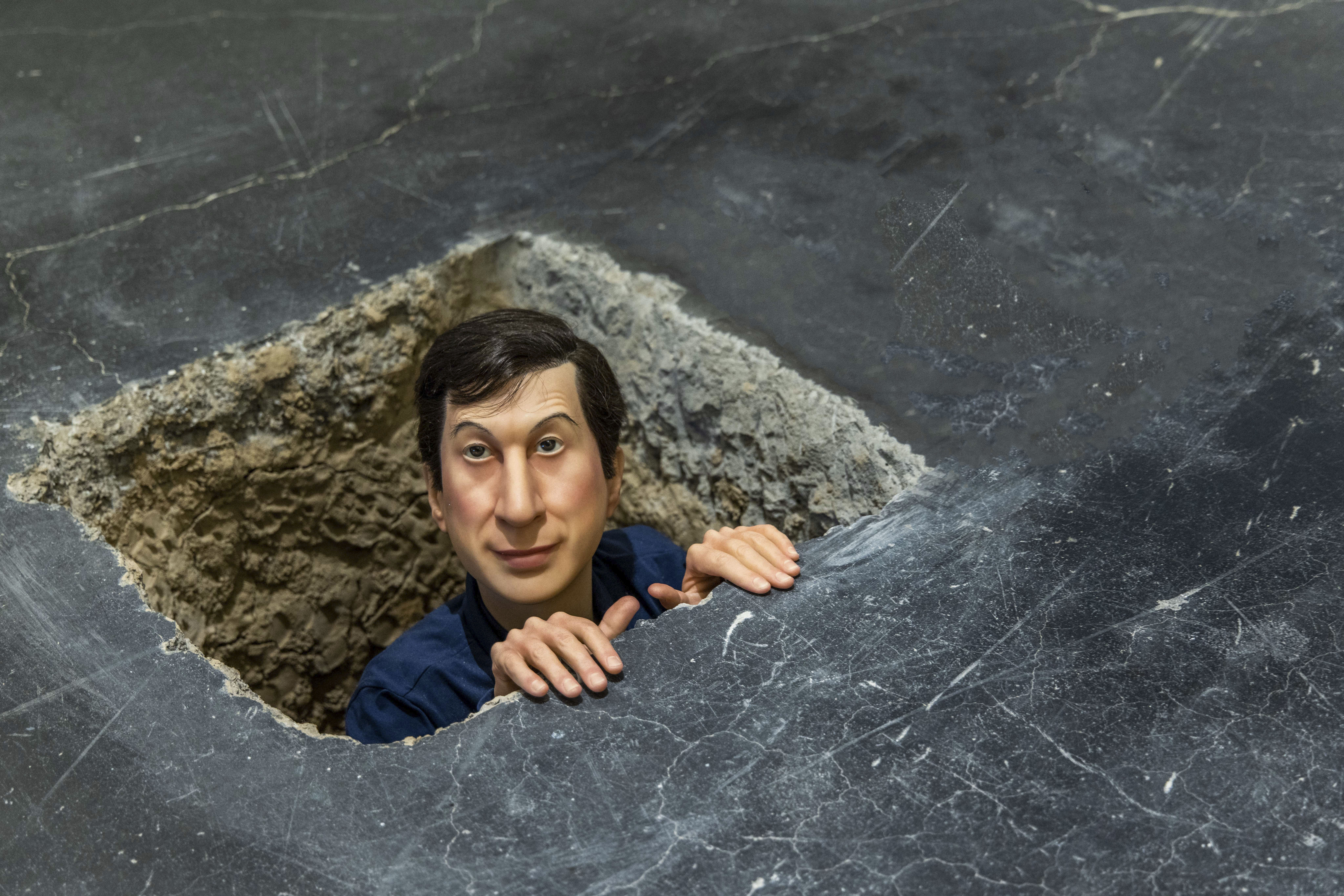
Thanks to his viral banana sculpture, Maurizio Cattelan is very big in China. Exactly how big, you ask? Well, for one thing, his first solo exhibition in the country is outselling Andy Warhol’s.
“Maurizio Cattelan: The Last Judgment” at the UCCA Center for Contemporary Art in Beijing is drawing lines around the block. In the 24 days since it opened to the public on November 22, it has attracted 46,000 visitors—around 1,917 per day. That’s almost twice the daily average of the museum’s Andy Warhol survey earlier this year, which drew around 1,010.
Organizers estimate that the total number of visits to the Cattelan show could be on par with, if not exceed, the 350,000-person attendance for its blockbuster Picasso retrospective in 2019, its most popular show to date.
Comedian at UCCA Beijing. Courtesy of UCCA Center for Contemporary Art. Photo by Sun Shi.
“The viral phenomenon is not comprehensible to me,” Cattelan told Artnet News via email, saying it was “luck” and the existence of social media that brought him the fame. He found the prospect that he is bigger than Warhol and about as popular as Picasso in China “hard to understand.” As he put it, “He was Cartier and I am Swatch.”
Both Swatch and Cattelan, however, have plenty of fans. Locals are in fact so enthusiastic about Comedian, the controversial $120,000 work in which the artist duct-taped a banana to the wall at Art Basel Miami Beach, that they are making imitations of their own. (One of three Comedian editions is in the UCCA show.)
Bananas and various objects taped to the wall have been spotted across Beijing’s art district 798 in recent weeks. These images—as well as elaborate videos—have promptly gone viral in China’s social-media sphere.
Thanks to the sensation that is Comedian, “people think about me when they see a banana,” Cattelan admitted. But he wants audiences to take away a few things from the show beyond social-media fodder. “People hopefully will get out the idea that you can have fun while delivering a serious thought,” he said.
Why did Comedian strike such a chord? Cattelan posits that it is because the work brought “comfort” rather than “discomfort.”
“Every time you give the audience something they can immediately recognize, you make them happy because they feel comfortable,” he said. “I think this is what Jeff Koons did in a more expensive way with his Rabbit. Contemporary artworks often deal with discomfort, and I also work with that very often. But I believe that comfort is very important to viewers.” (He added that he enjoyed seeing visitors’ own interpretations of the work scattered around town.)
Another interpretation of Comedian that has gone viral in China’s social media.
“The show resonates with the audience’s understanding of what art can do,” said Philip Tinari, director and CEO of UCCA. “There has been a lot of attention to specific pieces such as Comedian, but also a lot of smart interpretation. For many viewers, it’s an exhibition about life and death.”
Indeed, Comedian is only one of the 29 works featured in the exhibition, which traces the artist’s trajectory across more than three decades. Curated by Francesco Bonami, the show features some of Cattelan’s key early works including Lessico Familiare (1989), Catttelan (1994), Bidibidobidiboo (1996), and Novecento (1997).
“It is a show that speaks to everybody,” Bonami said, “and each work tells a different story.”